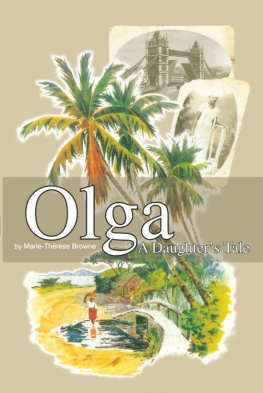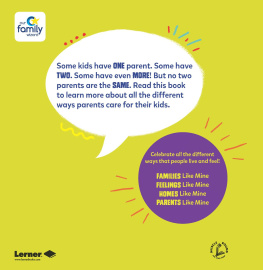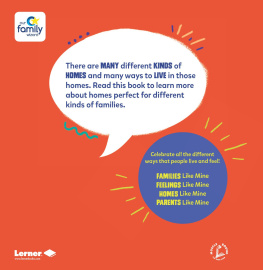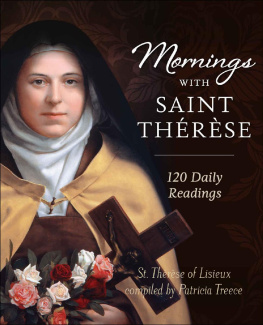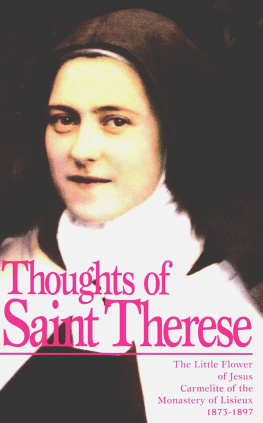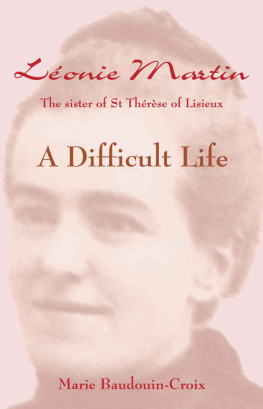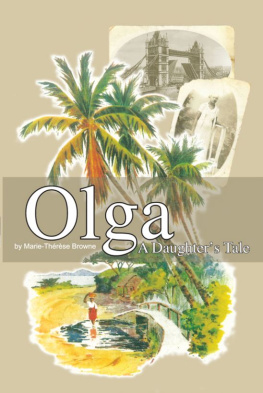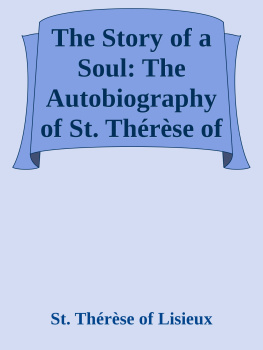Marie-Thérèse Browne - Olga - A Daughters Tale
Here you can read online Marie-Thérèse Browne - Olga - A Daughters Tale full text of the book (entire story) in english for free. Download pdf and epub, get meaning, cover and reviews about this ebook. year: 2008, publisher: Marie Campbell, genre: Home and family. Description of the work, (preface) as well as reviews are available. Best literature library LitArk.com created for fans of good reading and offers a wide selection of genres:
Romance novel
Science fiction
Adventure
Detective
Science
History
Home and family
Prose
Art
Politics
Computer
Non-fiction
Religion
Business
Children
Humor
Choose a favorite category and find really read worthwhile books. Enjoy immersion in the world of imagination, feel the emotions of the characters or learn something new for yourself, make an fascinating discovery.
- Book:Olga - A Daughters Tale
- Author:
- Publisher:Marie Campbell
- Genre:
- Year:2008
- Rating:3 / 5
- Favourites:Add to favourites
- Your mark:
- 60
- 1
- 2
- 3
- 4
- 5
Olga - A Daughters Tale: summary, description and annotation
We offer to read an annotation, description, summary or preface (depends on what the author of the book "Olga - A Daughters Tale" wrote himself). If you haven't found the necessary information about the book — write in the comments, we will try to find it.
Olga - A Daughters Tale — read online for free the complete book (whole text) full work
Below is the text of the book, divided by pages. System saving the place of the last page read, allows you to conveniently read the book "Olga - A Daughters Tale" online for free, without having to search again every time where you left off. Put a bookmark, and you can go to the page where you finished reading at any time.
Font size:
Interval:
Bookmark:
Marie-Thrse Browne
OLGA A DAUGHTERS TALE
Copyright 2007 by Marie-Thrse Browne
* * * * *
The majority of events that I have written about were told to me by my mother, Olga with gaps filled in by my Aunt Ruby Shim (nee Browney) during my first visit to Jamaica to meet my extended family. Other events are assumptions based on my knowledge of relevant facts and circumstances. Regarding my research, particularly relating to the historical and social background of Jamaica as well as its culture, I would like to acknowledge the following:
The Newspaper Archives of The Jamaica Gleaner
The National Archives, Kew, Richmond, Surrey, UK
Jubilee Library, Brighton, East Sussex, UK
BBC Archive Department
The Times Archive (London)
Jamaica in 1905 by Frank Cundall
* * * * *
PART ONE
HOW IT ALL BEGAN
Christopher Columbus, the explorer, had been so mesmerized by Jamaicas beauty he had described it in 1494 as "the fairest land my eyes have ever seen" and had been greeted by a kind, friendly, gentle people known as the Arawaks who gave the island its name, Xaymaca meaning land of wood and water. But the Arawaks suffered great ill-treatment at the hands of their Spanish conquerors and by the time Britain took Jamaica from Spain in 1655 they had all died.
Throughout the entire period of British rule and, not including the huge numbers born into slavery, it was estimated that upwards of 1,000,000 Africans were imported against their will into Jamaica. People forced to work as slaves on plantations owned by rich white men and women and subjected to extreme cruel and brutal treatment.
During slavery the plantation remained the most important unit and a rigid class system existed. You were judged to be important according to the type of work you did, the colour of your skin and how much money and land you owned.
There were three groups of people the whites, the coloureds and the slaves who were black. Among the whites, the most important in society were the planters who were very rich from the sale of sugar and owned vast areas of land on which they built great houses usually on a hill overlooking the plantations and slave houses. Built by expert slave labour, they were manorial with fine wood panelling, vast rooms, and opening one into another, windows that reached to the floor and wide staircases modelled on the Georgian style. Below these ample living-rooms gleaming with their shining smooth wood polished floors were the quarters of the slaves who lived in cramped airless conditions behind stout iron bars at small windows.
Next in importance were the traders who sold merchandise to the people; tools for the estates, food items such as flour, fish, salt beef, cheese, wine, clothing and candles. They were very wealthy people but because they didnt own any land they were considered less important than the planters.
After the traders, came the coloureds, half white and half black mulatto the result of a white man having a child by a black woman, although it was against the law for white women to have children with a black man. The coloureds thought they were better than the slaves mainly because they were not fully black, their reasoning being that the closer they came to being white, the more important they were. But some planters did free their mulatto children and in this way a large number of coloureds were free to start their own businesses.
Then there were skilled slaves. Among these people were midwifes, wheelwrights, masons and carpenters.
Next came the house slaves, the Blacks who worked as butlers, cooks, nurses, ladies maids, and coachmen in the kitchen, stable or garden. They worked close to their master and were frequently beaten particularly if he or she was upset about something. Punishment was often brutal, for example when a little girl was beaten and nailed through her ears to a tree for having broken a special cup belonging to her master.
The lowliest, and they amounted to more than half the slaves in Jamaica, were field slaves and it was primarily on their backs Jamaica became a jewel in the British Empire. They prepared the land, planted, cut and carried the canes to the mills, then ground it, made the sugar and carried it to the ships.
Jamaica reinvented itself when slavery ended in 1838. The workers legally had their freedom and now the owners of the sugar plantations had to pay the men who had once been their slaves. But many refused to work for the planters. Because they were free the black workers went into the hills and either squatted on Government property or bought small pieces of land from the missionaries who bought land from the Government specially for the purpose of selling it back to the freed blacks and coloureds at a fair price so they could become independent and grow their own crops.
They established themselves as free settlers and grew coconuts, spices, tobacco, coco, pimentos and, of course, bananas. They formed hardworking, independent small businesses, selling their produce to local markets and, not only were they financially successful themselves, their efforts went some considerable way to making Jamaica economically solvent again after the demise of the sugar market.
The planters needed workers so now free, but poor, immigrants arrived from Africa, Portugal, China, India, Syria and the Lebanon to work. The new immigrants were neither black nor white and many didnt adapt to plantation work so some, like the Chinese, started their own businesses. These people brought with them their religion, language and cultures and enriched an already complicated society.
New shipping routes opened up between London and the West Indies and there was a lot of commercial activity in Jamaica. The British Government and the Institute of Jamaica encouraged men and women from Great Britain to move to Jamaica. Together they instigated a scheme whereby young men could pay a premium to plantation owners in exchange for instruction in the cultivation of crops indigenous to Jamaica. Once they had served an apprenticeship they would be able to buy government land well below the market price.
******
CUTTING FROM THE TIMES LONDON - July 1900
Opportunity for Hard Working Reliable Young Man
Kingston, Jamaica
ARTICLE PUPIL SCHEME
Pupil for pen-keeping, banana and coffee plantation. Pupil will be required to assist in the management of coffee fields, surveying and laying out roads for plantation purposes, keep the plantation books and accounts in order and superintend labourers. In exchange pupil will receive practical instruction in coffee planting and preparing coffee for market, and instruction in the cultivation of bananas.
Pupil must be sober and honest, write a fair hand. A horse and forage will be supplied. Must have good outfit for working and other clothes, strong boots, riding breeches, leggings, waterproof cloak. Linen, etc. supplied. Polo, shooting, lawn tennis, other British sports. Good society. Will be required to furnish first-class references.
Next pageFont size:
Interval:
Bookmark:
Similar books «Olga - A Daughters Tale»
Look at similar books to Olga - A Daughters Tale. We have selected literature similar in name and meaning in the hope of providing readers with more options to find new, interesting, not yet read works.
Discussion, reviews of the book Olga - A Daughters Tale and just readers' own opinions. Leave your comments, write what you think about the work, its meaning or the main characters. Specify what exactly you liked and what you didn't like, and why you think so.

